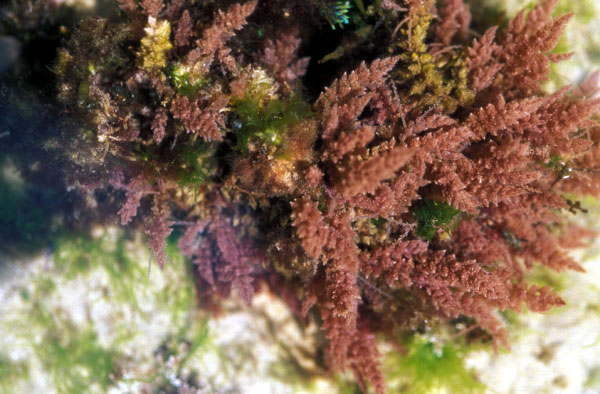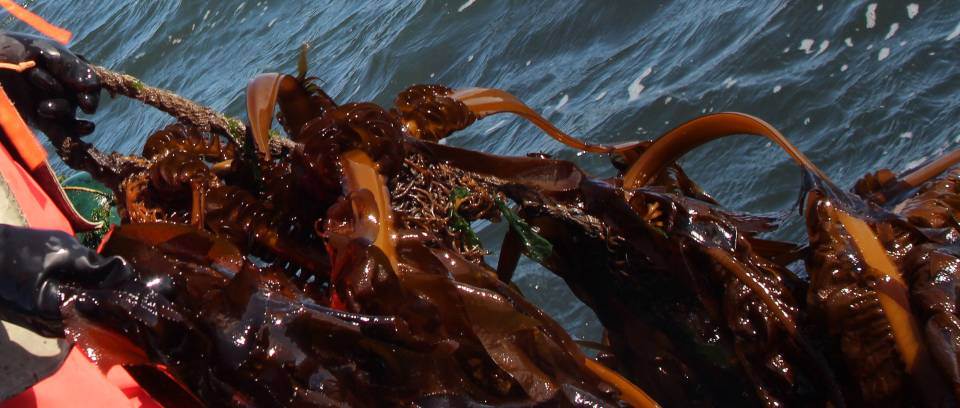Carrageenan seaweed farming based primarily on the cultivation of Kappaphycus and Eucheuma species has grown significantly in the Philippines and Indonesia in the last two decades. Growth has also taken place on a smaller scale in the United Republic of Tanzania and a few other developing countries. Thanks to attributes such as relatively simple farming techniques, low requirements of capital and material inputs, and short production cycles, carrageenan seaweed farming has become a favourable livelihood source for smallholder farmers or fishers and generated substantial socio-economic benefits to marginalized coastal communities in developing countries. However, further development of carrageenan seaweed farming needs to overcome various barriers and constraints such as inclement weather conditions, disease outbreaks, uncertain and fluctuating market conditions, lack of value-added products and value-adding activities in most of seaweed farming countries, low incomes of seaweed farmers in some countries, and occupational health hazards. With six country case studies and one global synthesis, this document attempts to provide a balanced assessment and comparison of the social and economic performance of carrageenan seaweed farming in different countries. Various issues related to seaweed–carrageenan value chains are highlighted. The technical and economic performance of a number of carrageenan seaweed farming cases are systematically evaluated and compared. The positive and negative social impacts of carrageenan seaweed farming are discussed. Issues related to governance and institutions in the sector are reviewed. Challenges and constraints faced by different countries in the future development of their seaweed industries are identified. The document also highlights a series of information and knowledge gaps that need to be filled in order to form a clearer vision of carrageenan seaweed farming development in the future and facilitate evidence-based policy decision-making and sector management.
Digital library
-
-
FAO fisheries fact sheet on Chondrus crispus (Stackhouse 1797), also known as Irish moss.
-
Concerns about how ocean acidification will impact marine organisms have steadily increased in recent years, but there is a lack of knowledge on the responses of macroalgae. Here, we adopt an outdoor continuous-flowing mesocosm system designed for ocean acidification experiment that allows high CO2 conditions to vary with natural fluctuations in the environment. Following the establishment of the mesocosm, five species of macroalgae that are common along the coast of Korea (namely Ulva pertusa, Codium fragile, Sargassum thunbergii, S. horneri, and Prionitis cornea) were exposed to three different CO2 concentrations: ambient (×1) and elevated CO2 (2× and 4× ambient), over two-week period, and their ecophysiological traits were measured. Results indicated that both photosynthesis and growth exhibited species-specific responses to the different CO2 concentrations. Most notably, photosynthesis and growth increased in S.thunbergii when exposed to elevated CO2 conditions but decreased in P. cornea. The preference for different inorganic carbon species (CO2 and HCO3-), which were estimated by gross photosynthesis in the presence and absence of the external carbonic anhydrase (eCA) inhibitor acetazolamide, were also found to vary among species and CO2 treatments. Specifically, the two Sargassum species exhibited decreased eCA inhibition of photosynthesis with increased growth when exposed to high CO2 conditions. In contrast, growth of U. pertusa and C. fragile were not notably affected by increased CO2. Together, these results suggest that the five species of macroalgae may respond differently to changes in ocean acidity, with species-specific responses based on their differentiated photosynthetic acclimation. Understanding these physiological changes might allow us to better predict future changes in macroalgal communities in a more acidic ocean.
-
A factorial design experiment, using in situ cage cultures, was used to investigate the effects of frequency and concentration of nutrient pulses on growth, nutrient uptake, and chemical composition (C, N, P) of Gracilaria tikvahiae McLachlan in nearshore waters of the Florida Keys. Both frequency and concentration of the nutrient pulses affected growth and chemical composition of G. tikvahiae, indicating nutrient limitation occurred during the study. Growth of G. tikvahiae increased with increasing pulse frequency up to the highest level used (2·wk−1) at all pulse concentrations; in contrast, growth increased with increasing pulse concentration to the highest concentration at the low pulse frequency but not at the higher pulse frequencies. Although the frequency of nutrient pulses appeared more important in regulating growth and pre-pulse levels of chemical constituents than pulse concentration, the effects of frequency were due to its effects on total nutrient loading (i.e. flux) and not to the effects of frequency of nutrient enrichment per se. Greater variation in percent P compared to percent N in G. tikvahiae tissue between pulses and an increased PO3−4 uptake rate in nutrient-limited G. tikvahiae suggests that P rather than N was the primary limiting nutrient during the study; however, N was an important secondary limiting nutrient indicating dual nutrient-limitation occurred. While the pulse medium used had a N:P ratio of 18 : 1, much higher uptake ratios, ranging from 27:1 to 80:1, actually occurred, supporting the contention of P-limitation. Thus, nutrient pulse strategies with G. tikvahiae in P-limited systems need to utilize excessively lowN:P ratios in the pulse medium to offset the differential uptake rates of NH+4 and PO3−4 at the high concentrations typically used in pulse-feeding strategies.
-
The alginic acid content of some Indian brown algae has been studied by Valson (1955). Pillai (1957). Kappanna at. a/5. (1962) Umamaheswara Rao (1969). Umamaheswara Rao and Kalimuthu (1 972) and Kaliaperumal and Kalimuthu (1976). In recent years information on growth variations and mannitol and alginic acid contents in certain alginophytes was made available by the studies of Umamaheswara Rao (1969). Umamaheswara Rao and Kalimuthu (1972) and Kaliaperumal and Kalimuthu (1976) . In the present account variation in growth. and mannitol contents in Pad in. gymnospo,a observed over a period of 2 years (January 1975 to December 1976) are given.
-
IB can play a critical role in maintaining UK competitiveness in global markets and in the creation of a low-carbon knowledge-based economy in the UK. IB is defined as "the use of biological substances" for the processing and production of enzymes, chemicals, materials and energy".
-
Techno-Economic Feasibility Analysis of Offshore Seaweed Farming for Bioenergy and Biobased Products
The purpose of this study is to provide an initial assessment of the technical and economic feasibility of cultivating seaweed offshore to produce biofuels. This report reviews the seaweed industry and the higher value products that could improve the economic attractiveness of seaweed biofuel production process. We review previous attempts at offshore seaweed culture for biofuels, the technical and economic challenges faced by those projects, and the lessons learned. Progress in offshore seaweed farming technology is also examined.
We propose a concept for offshore seaweed cultivation that positions large seaweed farms in natural nutrient upwelling areas. This concept greatly simplifies prior proposals based on artificial upwelling of deep ocean waters for nutrient supply. We conclude with a technology road map that recommends future activities to move offshore seaweed culture from the present concept and vision to a future commercial reality.
For the context of this report, “offshore” or “open ocean” growing conditions refers to growing seaweed in waters that are generally too deep for even giant kelp to survive on their own and that are free from the direct influence of land. Nearshore refers to habitats of sufficiently shallow depth to enable such seaweeds to attach and grow or which provide a sheltered environment for aquaculture operations. This report documents the long history of using seaweeds to meet human needs. The economic value of seaweeds worldwide is currently about $6 billion USD, primarily as food products, and also as hydrocolloids for the food and pharmaceutical industry, soil conditioners, animal feeds, and cosmetics. The total seaweed harvest is reported at 15.7 million metric ton wet weight (about one million ton dry weight) per year, of which almost 90% is produced by nearshore aquaculture production. Thus, seaweed farming is already a significant industry, with a sophisticated technological basis, ranging from the biotechnology to aquaculture, processing, and marketing of the many products derived from these plants.
As the need for renewable energy continues to grow, seaweed farming has the potential to help meet future energy needs. The oceans cover over 70% of the Earth’s surface. Use of just 1% of that along the ocean margins could supply about 3.5 billion dry ton of new biomass annually, if the production rates already achieved in coastal seaweed farms in countries like China could be projected for open ocean systems. This is three-times the maximum amount of terrestrial biomass that can be reasonably collected annually in the U.S. Such systems would not competewith the availability of fresh water, land, and nutrients needed to sustain terrestrial agriculture.
Large-scale open ocean seaweed farming for biofuels production was attempted in the 1970s and 1980s, but was not technically successful. However, the lessons learned from that earlier attempt, together with advances in open ocean engineering and the current energy economics, provide the basis and incentive to develop a novel approach to open ocean farming. Indeed, exploratory R&D activities in Japan, Korea, Denmark, Germany, and the United Kingdom, among others, are already pioneering new efforts in this area. Large-scale open ocean farming
could be used to produce the next generation biofuels, in particular butanol, for which historical precedence exists, and also to increase the supply of higher value animal feeds and bioproducts.The technical and economic viability of seaweed biomass production for conversion into biofuels requires an understanding of the factors that limit their growth in nature and under managed aquaculture operations, the evaluation of processes for converting the biomass into biofuels, and a determination of the risk factors in a seaweed-to-energy pathway. As noted above, we propose a concept for offshore seaweed cultivation, which we call the “Offshore Seaweed Farm”. This would be based on one-km2 (100 hectare) dynamically positioned floating seaweed production platforms. A Marine Biorefinery would take the seaweed biomass and process it into biofuels and other products.
-
The oceans cover 70% of Earth yet they yield only 1.5% (117 million metric tons (mt)) of the 7.6 billion mt of food that we produce each year. Can we make more productive use of them? If so, how and, in light of challenges now faced by global agriculture, should we try? This paper addresses these questions by looking at seaweed farming and the idea that a parallel, photosynthetically driven system of food production, a 'Marine Agronomy', could be developed at sea to supplement the food we grow on land.
-
Selaru Island community has long ago been familiar with activity of fulfilling needs through Tnyafar. Being a local wisdom, every household used Tnyafar as a livelihood strategy. Through Tnyafar, community exploited natural resources regularly to ensure the fulfillment of the needs. This research was aimed to analyze community activity that based on local wisdom and to understand the position of local wisdom in the process of fulfilling needs. Research used qualitative approach. Data collection technique involved depth interview and focussed group discussion. Informants were selected with Snowball Technique with land-owner as key informants. Other informants included Tnyafar Chief, Village Chief, and Tnyafar members either men or women. Result of research indicated that Tnyafar was a local wisdom expression in small island that takes into account the limited natural resources as the inheritance for the next generation. Also through Tnyafar, community did work activity together to ensure the fulfillment of needs. All the needs including food, cloth and shelter were fulfilled through the work output at Tnyafar.
-
Physiological responses to the hypo-osmotic and temperature stresses of an invasive species, Gracilaria vermiculophylla, were compared to those of the native Atlantic species, G. tikvahiae and G. cervicornis. For the hypoosmotic and lower lethal temperature experiment, a Connecticut (CT) strain of the invasive G. vermiculophylla and a Rhode Island (RI) strain of the native G. tikvahiae were cultivated at combinations of five different salinities (S ¼ 5, 15, 20, 25 and 30) and at five different temperatures (58C, 108C, 158C, 208C and 258C) for 3 weeks. For the upper lethal temperature experiment, two strains of G. vermiculophylla from CT and Portugal, two strains of G. tikvahiae from CT and RI and one Florida strain of G. cervicornis were cultivated at temperatures ranged from 228C to 398C in 28C or 38Cincrements for 14 days. Gracilaria vermiculophylla showed a wide range of temperature (58C–348C) and salinity (5 – 30 S) tolerance; whereas, G. tikvahiae cannot withstand harsher environmental stresses, such as prolonged exposures to salinities of 20 S and temperatures of 108C or 348C. Gracilaria vermiculophylla also grew faster and had higher survival rates than G. tikvahiae or G. cervicornis. These results suggest that the high tolerance and growth capacity of G.vermiculophylla may be responsible for the successful invasion of this alga into Long Island Sound and elsewhere along the east coast of North America.





